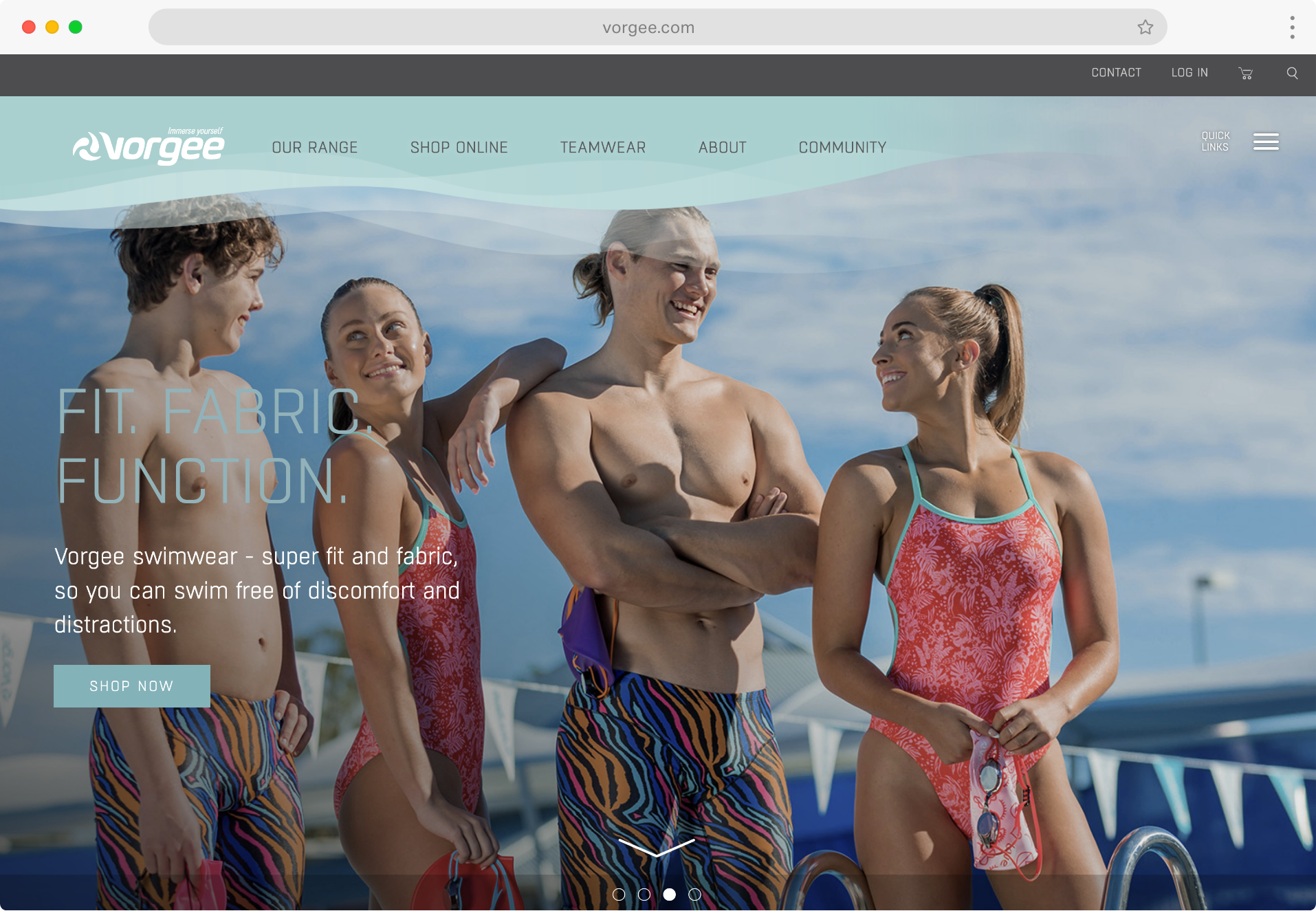10 Tips to Planning your 2025 Website Redesign Project

The new year is the perfect opportunity for giving your business website a makeover. If you’ve taken a look at your website and decided it’s time for a redesign, you may be wondering where to start.
Before launching into your website redesign project, it’s important to take a step back and do some strategic planning. This will help you prepare better, engage the right web design agency, and ensure all stakeholders are aligned.
That’s why we’re sharing our top ten tips for planning a successful website redesign project in 2025. Follow these tips to ensure 2025 is a great year for your business.
1. Define Goals & Objectives
Begin by clearly defining the goals and objectives of your website redesign. Think about why you are undertaking a website redesign. For example, are you aiming for a more modern look, improved user experience and functionality, increased conversion rates, or all of the above?
Remember, it’s not just about how your site looks, but rather about how it works. Be clear about why you’re doing a redesign, and tie those goals to measurable results. Then make sure to communicate those goals with your team or web design agency.
Consider these data-driven objectives for your site:
- Increase number of visitors
- Increase time on site
- Reduce bounce rates
- Improve domain authority
- Increase total new leads
- Increase sales
- Improve current SEO rankings for keywords
Understanding your primary goals will shape the redesign process and help you prioritise tasks accordingly.
At Margin Media, we conduct workshops to identify your business objectives and target audience's objectives. For example, see the graphic below.

2. Conduct a Website Audit
Before diving into the redesign process, it’s a good idea to conduct a thorough audit of your existing website and analyse its performance. This will give you an idea of where your current website stands and set a benchmark for you to improve on in your redesign.
Analyse your website’s current monthly performance in these areas:
- Traffic
- Leads and submissions
- Top-performing keywords and backlinks
- Best performing content/ pages
- Sales generated
Once you’ve studied these metrics, you’ll have a good idea of what aspects of your website are working well, and what needs improving. Tie these metrics to your goals for a successful redesign project.
3. Assess your Branding
Before you can start redesigning your website, you need to assess your business’ current branding, and decide whether you want it to change. Is it time for a complete rebranding or just a refresher?
Make sure your branding, messaging, and value proposition are clear and consistent. Anyone who visits your website for the first time should immediately understand what you do, how it may benefit them, and why they should stay on your site.
Communicate your brand’s visual identity through your logo, colour palettes, design aesthetics, and imagery. Hire a photographer and get updated team and office photos for your website. This will help to make your branding look professional, and build social proof and trust with your visitors.
Photographers we recommend are Kate Robinson for Brisbane based photography, and Mark Bond for Sydney and Melbourne based photography.

4. Understand your Target Audience
There’s no use redesigning your website if you don’t know who it’s for. It’s important to take the time to understand your desired audience, so you can create a targeted and high-performing website.
Start by creating your Buyer Persona. Research their preferences, behaviours, pain points and expectations. Then create content for your website that’s tailored to suit their needs. For example, your content should demonstrate how your products or services can solve their pain points and make their life easier.
Another way to show that you understand your audience is to add a FAQ section to your website. Answering FAQs helps to reassure visitors that your brand and products are trustworthy. This helps to reduce friction and encourage purchase decisions.
.png?width=2946&height=1056&name=image%20(2).png)
5. Choose the Right Content Management System
Choosing the right Content Management System (CMS) for your website is a crucial decision that influences the success and functionality of your online presence. The right CMS serves as the backbone of your site, facilitating seamless content creation, organisation, and management. When choosing your CMS, make sure to consider factors such as user-friendliness, scalability, design and customisation options, and the specific needs of your ecommerce store.
WordPress is the most popular CMS platform, powering 43% of websites worldwide. WordPress is free to use, and offers you the ability to make any kind of website, such as an online store, auction site, membership site, etc. It’s easy to use, and doesn’t require any technical skills or coding knowledge.
HubSpot is a fully integrated CMS that is specifically designed for business owners and marketers. It’s an ideal solution for growing businesses looking for an all-in-one system to manage their website, however, it isn’t well-suited to ecommerce. HubSpot is also fairly easy to use, even if you have little technical skills. It comes with built-in security features, integrated social and email marketing tools, and smart content features. Although there is a free version, to get the most out of HubSpot, you’ll have to upgrade to the paid version.
Shopify is the most popular CMS platform for ecommerce stores. It’s another integrated, all-in-one platform, specifically designed for ecommerce. It comes with an integrated payment solution, making your sales process easier. Shopify allows you to customise your store through themes and third-party apps. The cheapest plan is $39/ month, then the most expensive is up to $399/month for extra features.
6. Choose your Web Design Agency
Next, you’ll want to find the right web design agency to partner with for your redesign project. Take the time to research agencies in your area, and get a quote before making a commitment. Look at reviews from previous customers and examples of their past web design projects and whether they develop in your chosen CMS to get an idea of whether they are the right agency for you.
At Margin, we have over 17 years’ experience in designing websites that help businesses attract, capture and delight their ideal customers. Talk to us for your website redesign.

7. Allocate a Budget
Another important decision is setting your budget for your website redesign project. As a business owner, you’re probably wondering, ‘how much is this going to cost?’ It’s not a simple question to answer, as many factors can influence the cost.
In Australia, website redesign projects can range from $800 to $75,000, depending on who’s doing it, the size and scope of the project and the technology used. Doing it yourself or hiring a freelance designer are more affordable options for small businesses.
Although it’s more expensive, working with an agency is the best option if you require a complete website overhaul and are considering adding advanced features such as chat integration and ecommerce functionalities. At Margin, we can give you a quote for website redesign to help you make your decision.
8. Prioritise Mobile Design
When redesigning your website, prioritise a mobile-first design approach. Ensure your website is responsive and offers a seamless experience across various screen sizes. This will help to reduce friction with your visitors and encourage sales. It also helps to improve your website's discoverability, as Google also favours mobile-friendly websites when ranking search results.

9. Improve your SEO
Engaging in a website redesign presents a valuable opportunity to enhance the search engine optimisation (SEO) of your site, potentially leading to improved online visibility and performance. To improve your site’s SEO, start by conducting keyword research, then write new quality content that leverages those keywords. Then, take the time to optimise your content with meta tags, and quality backlinks. Redirect old URLs to new ones to maintain search engine rankings and prevent broken links.
For example, we recently worked with one of our clients to improve their website's SEO. We helped them achieve a massive increase in organic traffic to their site over the year. See for yourself in the graph below.

10. Post-Launch Monitoring & Maintenance
Once your new website has been launched, you need to monitor it and conduct regular maintenance to ensure it’s always performing at its best. Take a look at the goals and objectives you set at the start of your project and determine whether or not you achieved them.
Look at metrics such as lead generation, traffic, bounce rates, customer interactions and sales to determine your new website’s performance. Study Google Analytics and real-time data to get an idea of what’s working and what could be improved.
In this phase, you should also seek feedback from your customers about your new website. Remember, a website redesign is an ongoing process that requires regular updates and optimisations to meet user expectations and achieve your business goals.
Our Website Design Projects
Want to see some of our award-winning website designs? Click here to view our gallery.

Ready to Redesign your Website?
Download our Ultimate Website Redesign Checklist to get started.
Then talk to us! At Margin, we take a user centric approach to all our website design and development projects. Our objective is to strike a balance between your business objectives and user objectives. Our process is collaborative and insight-driven.


